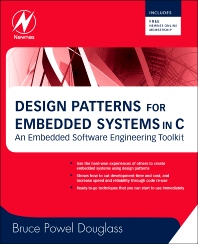Books in Programming languages
Books in Programming languages
- 2nd Edition
- January 18, 2011
- Keith D. Cooper + 1 more
- English
- eBook9 7 8 0 0 8 0 9 1 6 6 1 3

Engineering a Compiler
- 1st Edition
- December 22, 2010
- William Kafig
- English
- Paperback9 7 8 1 8 5 6 1 7 7 0 4 7

VHDL 101
- 1st Edition
- September 23, 2010
- Bruce Powel Douglass
- English
- Paperback9 7 8 1 8 5 6 1 7 7 0 7 8
- eBook9 7 8 0 0 8 0 9 5 9 7 1 9

Design Patterns for Embedded Systems in C
- 1st Edition
- August 20, 2009
- Sanford Friedenthal + 2 more
- English
- eBook9 7 8 0 1 2 3 8 3 8 5 7 5

A Practical Guide to SysML
- 3rd Edition
- March 23, 2009
- Michael Scott
- English
- eBook9 7 8 0 0 8 0 9 2 2 9 9 7

Programming Language Pragmatics
- 1st Edition
- February 2, 2009
- Dorothy C. Attaway
- English
- eBook9 7 8 0 0 8 0 9 4 3 2 5 1

Matlab
- 1st Edition
- July 24, 2008
- Sanford Friedenthal + 2 more
- English
- eBook9 7 8 0 0 8 0 5 5 8 3 6 3

A Practical Guide to SysML
- 3rd Edition
- Volume 3
- May 15, 2008
- Peter J. Ashenden
- English
- Hardback9 7 8 0 1 2 0 8 8 7 8 5 9
- eBook9 7 8 0 0 8 0 5 6 8 8 5 0

The Designer's Guide to VHDL
- 1st Edition
- February 14, 2008
- Timothy J. Thompson + 2 more
- English
- Paperback9 7 8 0 1 2 3 7 4 3 4 2 8
- eBook9 7 8 0 0 8 0 5 6 1 0 0 4

Bluetooth Application Programming with the Java APIs Essentials Edition
- 1st Edition
- January 22, 2008
- Joe Celko
- English
- Paperback9 7 8 0 1 2 3 7 4 1 3 7 0
- eBook9 7 8 0 0 8 0 5 5 7 5 2 6
